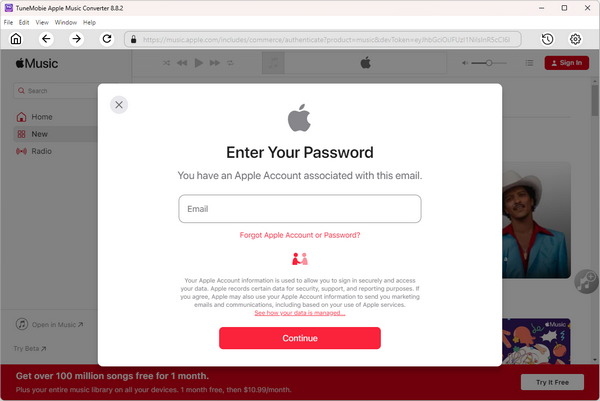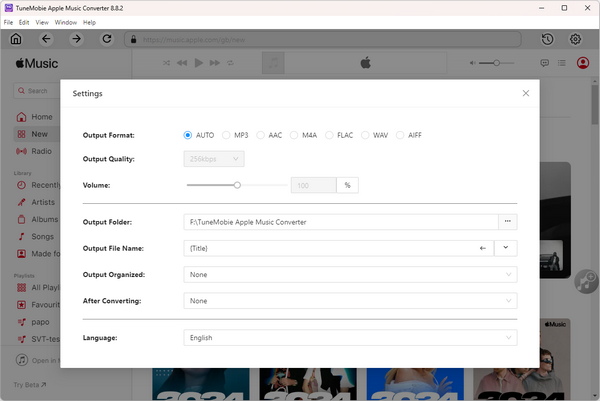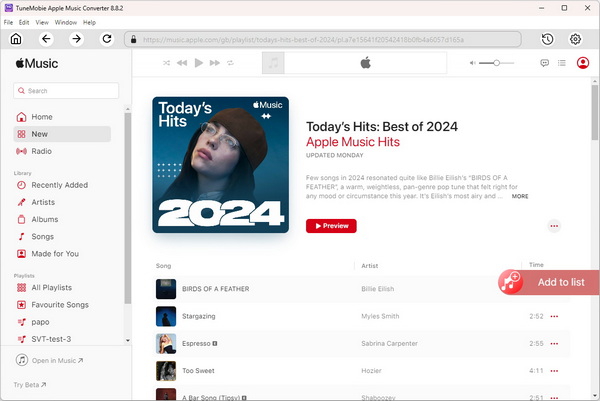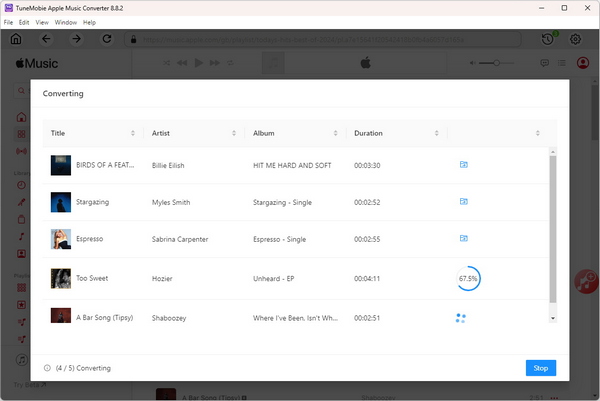- Part 1. The Differences between iTunes Music and Apple Music
- Part 2. Apple Music vs iTunes: Which Is Right for You or Use Both?
- Part 3. Save Money & Have the Convenience Meanwhile? It's Possible Now!
Part 1. The Differences between iTunes Music and Apple Music
At first glance iTunes purchases and an Apple Music subscription can look similar because both live inside Apple Music or the Music app. The crucial differences appear when you test ownership, portability, long term cost, and what happens if a subscription ends. Below are the key differences explained one by one so you can weigh cost, ownership, convenience, audio quality, and DRM before you decide.

Cost: Subscription Model vs Pay-per-Item
iTunes Store uses pay-per-item pricing. Most single songs cost around $1.29, though some may be $0.99 or $0.69. Albums vary widely, typically from about $4.99 to $14.99 depending on the release.
Apple Music is a subscription service. Typical prices are monthly: individual plan about $9.99, family plan about $14.99 for up to six people, and a discounted student rate. Subscriptions give access to the entire streaming catalog while active. Over time a heavy subscriber may pay more than buying a library, but subscriptions offer vast variety for the monthly fee.
Ownership: Buy Once, Keep Forever vs Subscription Access
iTunes purchases are permanent. Songs bought from iTunes are yours to keep, re-download from your Apple account, copy to other devices, and back up. Purchased files are not tied to an active subscription.
Apple Music provides access, not ownership. If you cancel your Apple Music subscription, any downloaded Apple Music tracks and playlists disappear from your library when the subscription ends. Files delivered via Apple Music are protected and associated with your Apple ID. Backing them up will not remove the subscription requirement or the DRM restrictions.
Convenience: Universal Files vs Platform-Restricted Streaming
Purchased iTunes tracks are delivered as plain M4A files that are widely compatible with media players and editing software. You can use purchased files in video projects, burn them to discs, or copy them to legacy devices.
Apple Music offers unmatched convenience of streaming millions of tracks, curated playlists, algorithm suggestions, and device sync. However, Apple Music files are DRM protected and are not playable on older iPods, many MP3 players, or most non-Apple media devices. Apple Music cannot be imported into many editing programs or transferred to unsupported
Audio Quality: Same Codec, Similar Bitrates vs Subscription Distribution
Both purchased iTunes songs (when purchased in the recent iTunes era) and Apple Music streams use the AAC codec. Historically purchased tracks were 256 kbps AAC M4A and Apple Music downloads have been distributed as 256 kbps AAC M4P files. Because they use the same codec and similar bitrates, perceived audio quality is essentially the same for most listeners in typical listening setups. Apple has introduced higher-resolution tiers and changes over time, so check current Apple announcements if absolute hi-res quality is a deciding factor for you.
DRM and Audio Formats: Apple Music Exclusives vs Ownership Forever
iTunes purchases are DRM free. When you buy a track from iTunes Store you receive a copy you can keep, move, and play on nearly any compatible device or software. You own a license to that file permanently.
Apple Music tracks are DRM protected during subscription. They are available as long as your subscription is valid. If you cancel, the files and playlists tied to the subscription become inaccessible. This DRM limitation means Apple Music is best if you value access over ownership. In contrast, buying from iTunes is the safe route for long-term ownership and portability.
Part 2. Apple Music vs iTunes: Which Is Right for You or Use Both?
Deciding between Apple Music and buying iTunes music depends on your listening habits, device needs, and how you value ownership. If you love discovering new music, creating playlists, and having a huge catalog at your fingertips, Apple Music is compelling. If you prefer to curate a personal library you own forever, need files for video projects, or use legacy portable players, buying from iTunes makes sense. Many users find a hybrid approach works best: subscribe for discovery and convenience, then buy the handful of tracks or albums they want to keep forever.
- Choose Apple Music if you prefer unlimited streaming, curated playlists, and device sync across modern platforms.
- Choose iTunes purchases if you want permanent ownership, broad device compatibility, and the freedom to use files in projects or on legacy players.
- Use both if you like streaming most of the time but want to permanently own favorite albums or rare tracks that you may need offline without DRM.
Part 3. Save Money & Have the Convenience Meanwhile? It's Possible Now!
Should you buy iTunes music songs or subscribe Apple Music streaming service, the question sounds like a dilemma. Is there any way to save money like Apple Music subscription but enjoy the convenience of iTunes M4A music at the same time?
The answer is YES if you have TuneMobie Apple Music Converter! Let's see why TuneMobie Apple Music Converter is an overwhelming reason to choose Apple Music subscription instead of purchasing music tracks on iTunes Store. It specializes in capturing Apple Music streams and exporting them as standard files you can own and move. This can be a practical addition to a mixed strategy where you stream for discovery but keep permanent copies of the songs that matter most.
Below are the amazing features of TuneMobie Apple Music Converter.
- Convert Apple Music songs to MP3, M4A, WAV, FLAC, AU, MKA, AC3 and M4R with 100% quality kept
- Convert M4B audiobooks, Audible AA/AAX audiobooks to M4A with chapter information kept
- Preserve ID tags like artist, album, genre, artwork, etc. in output MP3 or M4A
- Extract audio from iTunes movies, TV shows, music videos and home videos
- Customize bitrate, sample rate, audio channel and output folder as you like
- Rename and sort output files by ID tags and characters
- Perform 16X faster conversion speed to convert a bunch of songs in no time
- Locate any song in iTunes library quickly with built-in search box
- Output MP3/M4A songs will never expire even you unsubscribe Apple Music later
- Fully compatible with Windows 10, macOS Catalina and latest iTunes
Step 1. Open the app. Use the built-in Apple Music web player and click Sign In in the upper right. After sign-in your Apple Music library and playlists appear in the left panel.

Step 2. Open Settings, select FLAC or another preferred format and choose bitrate (up to 320 kbps). Set output folder, rename and sorting rules, and any post-conversion action such as opening the output folder.

Step 3. Browse the built-in player to an album or playlist and open its detail page to list tracks. Click Add to list (center/right) to queue all songs. You can also select individual tracks.

Step 4. Tracks are checked by default. Uncheck any you do not want, then click Convert. TuneMobie captures the audio stream and ID3 metadata and creates MP3, FLAC, or other files in your chosen output folder.

You may be interested in the following guides.